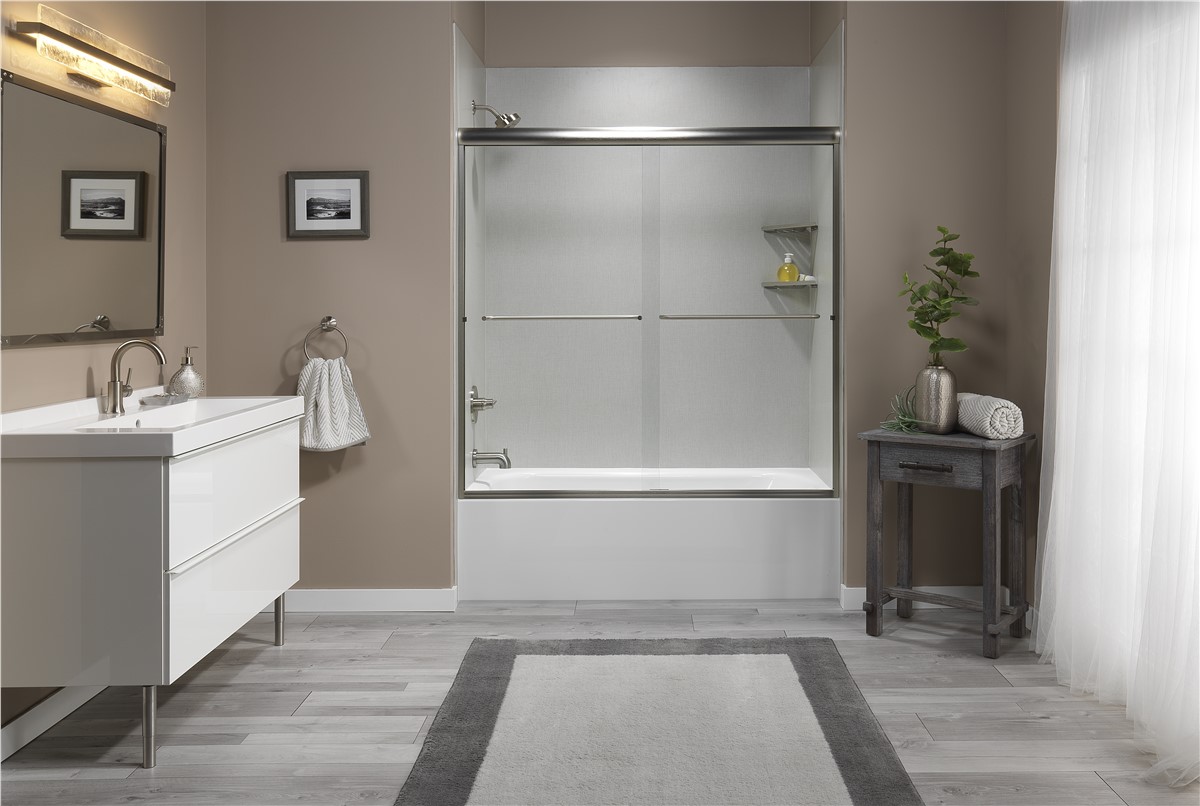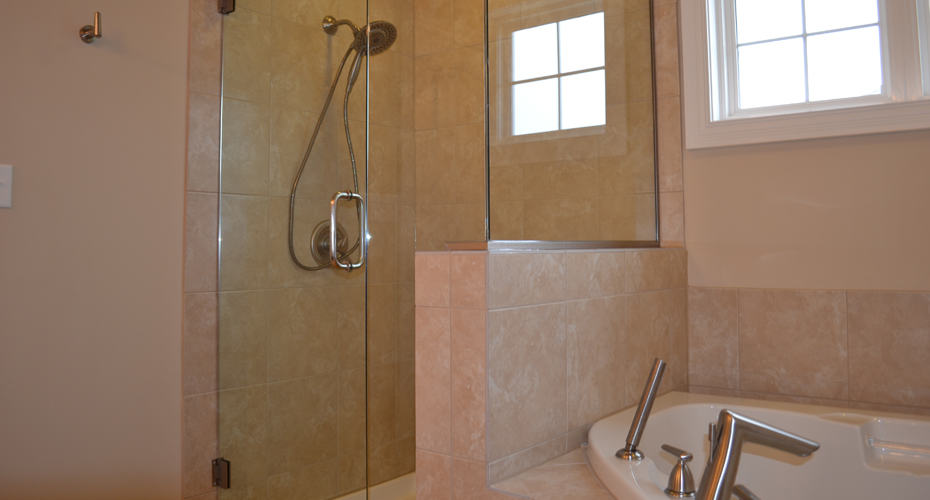Bathroom Remodeling Trends in South Bend, Indiana: Bathroom Remodeling South Bend Indiana

Bathroom remodeling is a popular home improvement project in South Bend, Indiana, as homeowners seek to enhance both functionality and aesthetics. The city’s diverse architectural landscape, from historic homes to modern developments, influences the bathroom design choices. Homeowners are drawn to styles that complement their existing architecture and lifestyle, while embracing current trends in materials and fixtures.
Modern Bathroom Designs
Modern bathroom designs emphasize clean lines, minimalist aesthetics, and functional spaces. The use of neutral colors, such as white, gray, and black, creates a sense of spaciousness and tranquility. Natural materials like wood and stone add warmth and texture, while sleek chrome or brushed nickel fixtures enhance the contemporary feel. Large format tiles, often in geometric patterns, are a popular choice for floors and walls.
Modern bathrooms often feature walk-in showers with frameless glass enclosures, freestanding tubs, and floating vanities for a sleek and minimalist look.
- Example: A modern bathroom in a renovated 1920s bungalow features a walk-in shower with a rain shower head, a floating vanity with a large mirror, and a freestanding tub with a view of the backyard. The color palette is white and gray, with accents of natural wood and black hardware.
Contemporary Bathroom Designs
Contemporary bathroom designs are similar to modern styles, but they often incorporate bolder colors and patterns. While still emphasizing clean lines and minimalist aesthetics, contemporary bathrooms embrace a more playful approach to design. The use of geometric shapes, metallic accents, and statement lighting creates a dynamic and stylish space.
- Example: A contemporary bathroom in a new construction home features a black and white color scheme, a geometric tiled floor, and a floating vanity with a large mirror. The space is accented with brass fixtures and a statement light fixture above the vanity.
Traditional Bathroom Designs
Traditional bathroom designs evoke a sense of classic elegance and timeless charm. They often feature warm color palettes, such as cream, beige, and brown, and incorporate traditional materials like marble, granite, and wood. Fixtures are typically ornate and detailed, with a focus on quality craftsmanship.
Traditional bathrooms often feature clawfoot tubs, pedestal sinks, and ornate lighting fixtures.
- Example: A traditional bathroom in a restored Victorian home features a clawfoot tub with a decorative showerhead, a pedestal sink with a marble countertop, and a chandelier above the vanity. The walls are painted in a soft cream color, and the floors are covered in marble tiles.
Farmhouse Bathroom Designs, Bathroom remodeling south bend indiana
Farmhouse bathroom designs are characterized by their rustic charm and relaxed atmosphere. They often feature natural materials like wood, stone, and reclaimed wood, and incorporate elements of farmhouse style, such as shiplap walls, exposed beams, and vintage fixtures. The color palette is typically neutral, with accents of warm colors like brown, green, and blue.
Farmhouse bathrooms often feature freestanding tubs, farmhouse sinks, and open shelving for storage.
- Example: A farmhouse bathroom in a remodeled ranch home features a freestanding tub with a rustic wooden surround, a farmhouse sink with a black faucet, and open shelving for towels and toiletries. The walls are covered in shiplap, and the floors are made of reclaimed wood. The color palette is white and gray, with accents of black and brown.
Planning and Budgeting for Your Bathroom Remodel

Embarking on a bathroom remodel is a significant investment, requiring careful planning and budgeting to ensure a successful and satisfying outcome. A well-defined plan will help you avoid costly surprises and ensure that your vision aligns with your financial constraints.
Defining the Project Scope
The first step is to clearly define the scope of your bathroom remodel. This involves determining what aspects of the bathroom you want to change and the desired level of renovation. Consider factors such as:
- Functionality: Do you want to simply refresh the existing space or completely change its layout? Are you adding new features like a walk-in shower, soaking tub, or separate vanity?
- Style: What aesthetic are you aiming for? Modern, traditional, contemporary, or something else? Choose a style that reflects your personal preferences and complements the overall design of your home.
- Materials: Determine the materials you want to use for flooring, walls, countertops, fixtures, and cabinetry. Consider durability, maintenance requirements, and budget constraints.
- Accessibility: If you need to make your bathroom more accessible, consider features like grab bars, walk-in showers, and raised toilets.
Creating a Realistic Budget
Once you have a clear understanding of the project scope, it’s time to create a realistic budget. This involves estimating the cost of various elements, including:
- Labor: The cost of labor will vary depending on the complexity of the project and the location. Get quotes from multiple contractors and compare their rates.
- Materials: Research the cost of materials, including flooring, tiles, fixtures, cabinetry, and paint. Be sure to factor in the cost of any specialty items or custom features.
- Permits: Obtain necessary permits from your local building department. These costs will vary depending on the scope of the project and your location.
- Contingency: It’s always wise to include a contingency fund of 10-20% to cover unexpected costs that may arise during the remodel.
Maximizing Budget Efficiency
There are several ways to maximize budget efficiency without compromising quality or style:
- Shop Around: Compare prices from different suppliers for materials and fixtures. Look for sales and discounts, and consider purchasing items in bulk.
- DIY: If you have the skills and time, consider doing some of the work yourself, such as painting, demolition, or installation of simple fixtures.
- Reusing Existing Elements: Consider reusing existing elements, such as the vanity or bathtub, if they are in good condition and fit your new design.
- Choosing Cost-Effective Materials: There are many cost-effective materials available that can still achieve the desired look and feel. Consider using porcelain tiles instead of natural stone, for example, or laminate countertops instead of granite.
Obtaining Necessary Permits
Before starting any work, it’s essential to obtain the necessary permits from your local building department. This will ensure that your project complies with local building codes and regulations. The specific permits required will vary depending on the scope of your project, so it’s best to contact your local building department for guidance.
Phases of a Bathroom Remodel
A bathroom remodel typically involves several distinct phases:
- Demolition: This involves removing existing fixtures, flooring, and walls to prepare the space for the new design. It’s important to dispose of waste materials properly and ensure safety precautions are taken.
- Plumbing: This phase involves installing new plumbing fixtures, pipes, and drainage systems. It’s essential to have a licensed plumber handle this work to ensure that the plumbing is installed correctly and meets local codes.
- Framing: This phase involves building the new walls, framing the shower or tub enclosure, and installing any necessary support beams. It’s important to use high-quality materials and ensure that the framing is properly braced.
- Electrical: This phase involves installing new electrical wiring, outlets, and lighting fixtures. It’s essential to have a licensed electrician handle this work to ensure that the electrical system is installed safely and meets local codes.
- Finishing: This phase involves installing the flooring, tiles, countertops, cabinetry, and fixtures. It’s important to pay attention to detail and ensure that all surfaces are properly sealed and protected.
Bathroom remodeling south bend indiana – Bathroom remodeling in South Bend, Indiana, offers a chance to transform your space into a haven of relaxation. Whether you’re seeking a modern, minimalist aesthetic or a classic, elegant design, the possibilities are endless. For inspiration, consider exploring the trends in bathroom remodel Madison WI , which showcases innovative designs and cutting-edge materials.
Ultimately, your South Bend bathroom remodel should reflect your unique style and enhance your daily life.
Bathroom remodeling in South Bend, Indiana, can be a rewarding project, transforming your space into a haven of relaxation and functionality. If you’re seeking inspiration, consider exploring the latest trends in bathroom design, like those highlighted in a comprehensive guide to bathroom remodel Springfield IL.
From sleek fixtures to innovative storage solutions, these ideas can spark your creativity and help you envision the perfect bathroom for your South Bend home.